Sustainability Action Plan
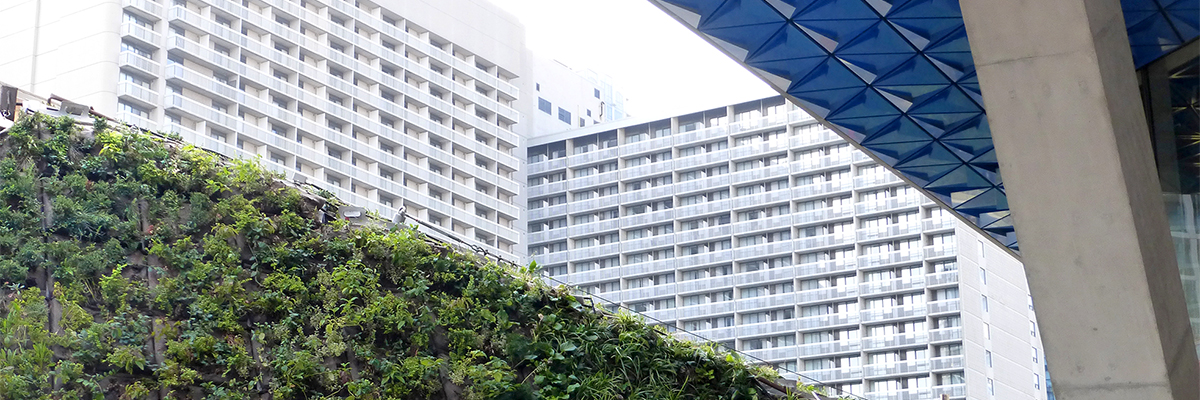
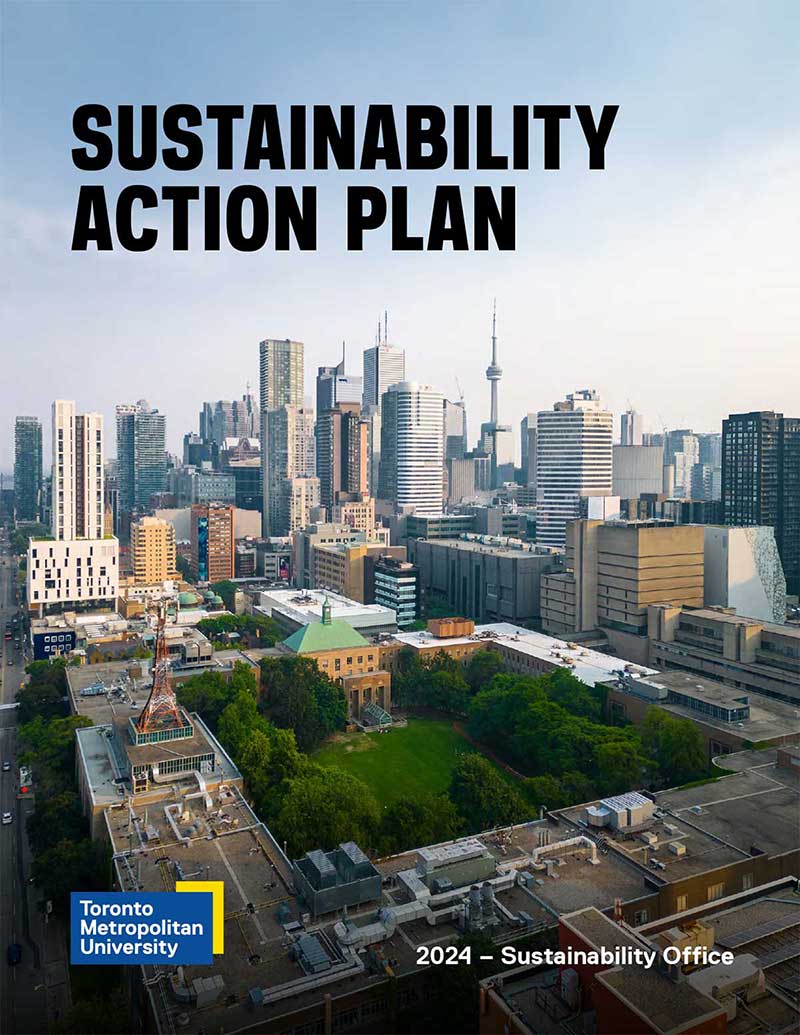
The effects of climate around the world have reached a crisis point with environmental degradation, weather extremes, economic disruption and food insecurity. A global cultural shift is imperative to preserve and rehabilitate our fragile ecosystems, maintain our planet's vitality and ensure its global inhabitants' wellbeing.
As a leading higher-education institution, Toronto Metropolitan University (TMU) is not only committed to tackling real-world challenges, we also aim to be a touchstone of innovation and leadership in restorative climate action, social equity and economic stability.
The Sustainability Office in consultation with the Climate Change and Sustainability Advisory Committee (CCSAC) is pleased to launch TMU’s first Sustainability Action Plan — a five-year plan to guide transformative change and empower our community members to contribute meaningfully towards a greener, more inclusive future.
Here we have provided a summary of the Sustainability Action Plan key goals, why they are important and what we need to do to achieve them.
Three long-term goals of the Sustainability Action Plan
Three long-term goals were identified based on their alignment with institutional values, community input, benchmarking opportunities, institutional peers and best practices, government targets and global perspectives.
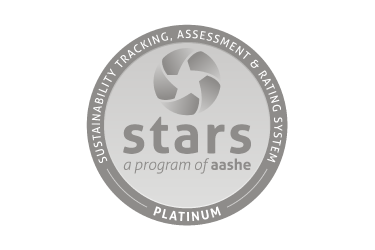
The Sustainability Tracking, Assessment & Rating System (STARS®) (external link) , developed by the Association for the Advancement of Sustainability in Higher Education (AASHE), is a transparent, self-reporting framework that is widely used by colleges and universities to benchmark their sustainability progress.
STARS® is built around four categories: Academics, operations, planning, administration, engagement.
There are five levels of recognition:
- Bronze (minimum score: 25)
- Silver (minimum score: 45)
- Gold (minimum score: 65)
- Platinum (minimum score: 85)
Why this is important
STARS is an industry-specific scorecard that helps us measure our progress. A Platinum STARS rating indicates that an institution not only meets the highest scores in recognized best practices, but has also demonstrated that it has developed actionable strategies for continuous improvement in climate action and social equity.
Where we are today
TMU’s current STARS ranking is Silver with a score of 54.26
What we need to do to reach our goal
- Public commitment to supporting “net zero” and developing a Climate Action Plan
- Published policies and procedures that work to institutionalize sustainability into decision-making processes.
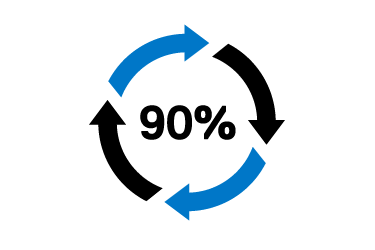
A “zero-waste” campus is one with a waste diversion rate of 90% or higher. TMU’s waste diversion rate has hovered around 40% over the past seven years.
The university has made significant efforts to increase awareness on waste sorting habits, improve waste infrastructure on campus, promote waste-source reduction, resource recovery, reuse and circularity, but the negative impacts of waste have reached a critical tipping point and we must make decisive improvements to meet our waste diversion goals.
Why this is important
Institutionally and as individuals we are accountable for all the materials that we procure and relinquish. Conscientious resource management can mitigate our ecological impact. Minimizing the waste we generate reduces our reliance on virgin materials and the energy required for extraction, fabrication, transportation and recycling. Good resource stewardship also supports social equity and improves health by supporting a circular economy and reducing pollution.
Where we are today
Current waste diversion rate as of 2022/2023: 39.9%
What we need to do to reach our goal
- Sustainable procurement with comprehensive policies for sustainable purchasing
- Centralized-waste program improvements
- Construction and demolition waste reduction
- Expand resource recovery, reuse and circularity programs
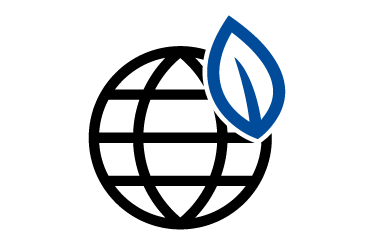
Greenhouse Gases (GHGs), which include carbon dioxide, trap heat in the atmosphere and warm the planet. GHG Protocol is an organization that provides greenhouse gas (GHG) definitions and accounting standards that allow organizations to identify, monitor and address their emissions inventories.
- Scope 1 emissions include direct emissions from sources owned or controlled by an organization, e.g., the burning of natural gas for heating, campus vehicles and mobile equipment.
- Scope 2 emissions include indirect emissions from the generation of purchased energy, such as the emissions related to the purchase and consumption of electricity from a utilities provider.
- Scope 3 emissions include additional indirect emissions that occur in the organization’s value chain, e.g. emissions linked to the production and transportation of goods and services or travel.
The university has the most direct control over Scope 1 and 2 emissions. Achieving net zero at TMU means improving the energy efficiency of the campus and operations, as well as significant investment into existing facilities.
Why this is important
Net-zero emissions are crucial in combating climate change to secure a viable planet for future generations. To effectively limit warming — and the economic volatility and climate instability it causes — immediate and aggressive emission reductions are needed worldwide.
Where we are today
Current annual Scope 1 & 2 emissions: 13,500 tCO2eC
What we need to do to reach our goal
- Improving building energy efficiency
- Converting heating systems to low-carbon electric heat pump systems
- Identifying opportunities for renewable energy, such as geothermal and wastewater heat recovery
Future planning for Scope 3 emissions
While we recognize the importance of Scope 3 emissions tracking and reduction in our sustainability efforts, we currently do not have the necessary data or methodology in place to set specific long-term goals for Scope 3 emissions.
As an interim goal of the Sustainability Action Plan, we are committed to first establishing a robust tracking methodology and gaining insights into our Scope 3 emissions footprint. This approach will enable us to set viable and meaningful long-term goals for Scope 3 emissions reduction in the future, aligning with our commitment to transparency and responsible sustainability planning.
Implementing the Plan: The Five Areas of Impact
Five priority areas of impact were identified where sustainability initiatives targeting these goals could be achieved through changes in operations and physical systems, cultural and behavioural changes, or combinations thereof:

- Academics
- Research and innovation
- Operations
- Buildings and utilities
- Grounds and ecosystems
- Waste and circular materials management
- Transportation
- Food and dining
- Procurement
- Planning and administration
- Community engagement and partnerships
Alignment with the UN’s Sustainable Development Goals (SDGs)
The Sustainable Development Goals (SDGs) are a call for action by all countries to promote prosperity and social equity while protecting the planet.
The 17 SDGs were developed by the United Nations to address the urgent environmental, political and economic challenges facing our world. The SDGs are a call for action by all countries to promote prosperity while protecting the planet. The goals are interdependent and recognize that ending poverty must go hand-in-hand with strategies for social equity, health and wellbeing, and environmental protection.
- No Poverty
- Zero Hunger
- Good Health and Well-being
- Quality Education
- Gender Equality
- Clean Water and Sanitation
- Affordable and Clean Energy
- Decent Work and Economic Growth
- Industry, Innovation and Infrastrastructure
- Reduced Inequalities
- Sustainable Cities and Communities
- Responsible Consumption and Production
- Climate Action
- Life Below Water
- Life on Land
- Peace, Justice and Strong Institutions
- Partnerships for the Goals
TMU’s Sustainability Action Plan is one way that we are contributing to the SDGs long-term goals for ending poverty, protecting the planet and tackling inequalities.
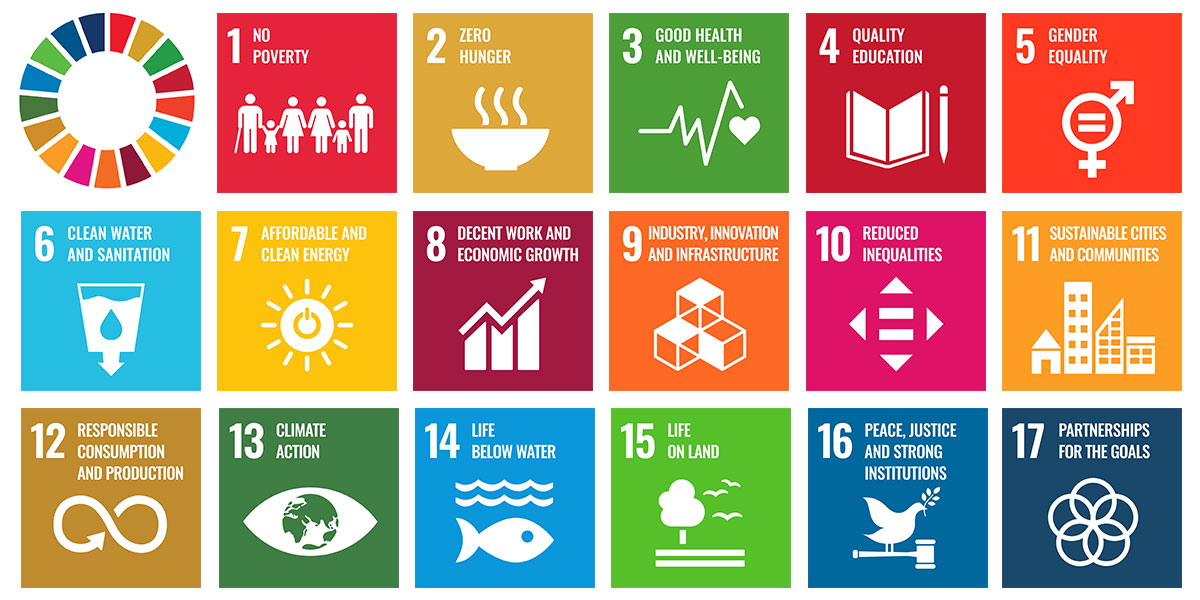
Learn more about how TMU is developing plans and taking action to create a more sustainable campus as part of our commitment to advancing the United Nations’ 17 Sustainable Development Goals (SDGs).
How the draft action plan was developed
The TMU Sustainability Action Plan has undergone extensive development in its initial two phases, which included a comprehensive engagement and review process with the university community from 2021 to 2023.
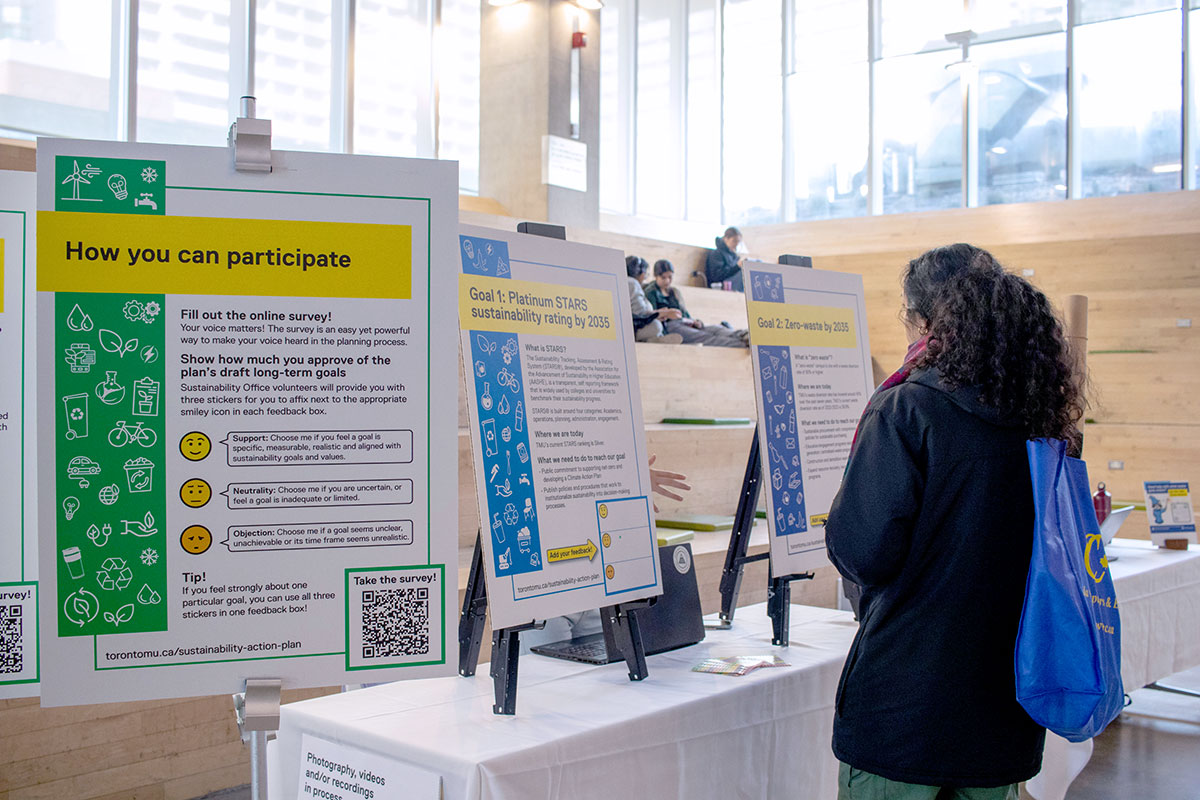
During the third phase of development, the plan was drafted and identified three, long-term, actionable goals to bring forward to the community for feedback.
The final consultation phase in the Winter term of 2024 helped to ensure the long-term, actionable goals are aligned with the broader mission of sustainability and support the values of TMU’s Strategic Vision and to ensure the goals are adequately defined, specific and measurable enough to be effectively pursued.
The consultation process included students, alumni, faculty, senior administrators, and facilities and operations teams.
Timeline of the development process
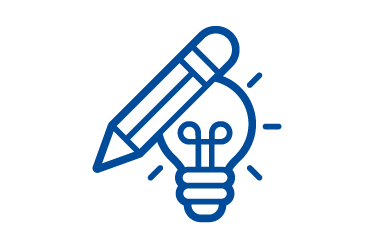
- Campus-wide sustainability action planning survey of students, alumni, faculty and staff that collected 2,417 responses to understand campus-wide sustainability practices and awareness
- Stakeholder consultation which included meetings with key stakeholder groups in university operations, including TMU Eats, the Project Management Office, Custodial Services and Groundskeeping

- Series of engagement events, including in-person Climate Week events to identify key concerns, gaps and challenges
- Partnership with Generation Climate (external link) : student-focused survey
- The Climate Change and Sustainability Advisory Committee (CCSAC) was formed, bringing together 21 members from various university sectors, including students, faculty and staff.
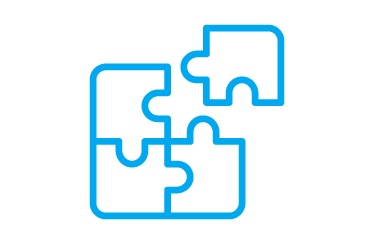
- Campus-wide survey on the draft long-term goals
- In-person outreach expo
Community participation in consultation activities is not just about giving feedback; it's about being an active part of a collective effort to drive sustainability forward at TMU. The efforts of students, faculty and staff helped to produce a plan of action designed for the TMU community by the TMU community. We’re working together to create a greener, more sustainable future that is inclusive, equitable, prosperous and ecologically balanced.